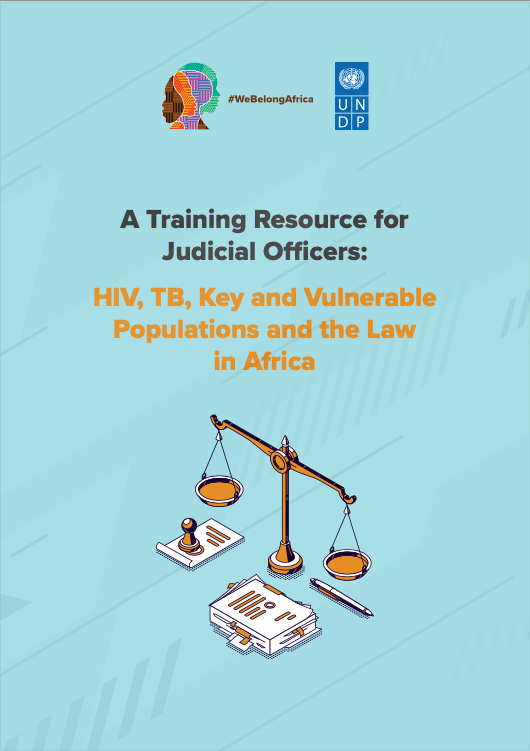Legal Environment Assessment for HIV: An operational guide to conducting national legal, regulatory and policy assessments for HIV
This manual was adapted from and developed based on ‘Legal Environment Assessments for HIV & AIDS, Guidance Document for the Africa Region: A Guide to conducting national-level assessments of a country’s legal and regulatory environment for HIV & AIDS’ (2012) by Kitty Grant, Consultant, and Amitrajit Saha, Senior Advisor HIV and Human Rights from the UNDP Africa Regional Service Centre.
This document is supported by the governments of Sweden and Norway in the framework of a three-year project (2013–2015) aimed at strengthening national and regional legal environments regarding access to HIV, health and social services in more than 15 African countries. The document draws on important resources developed by UNAIDS, WHO, World Bank, the American Bar Association etc. The content was enriched by the important experiences of government and civil society in the Pacific, Pakistan, Jamaica, Uganda, Seychelles and Malawi.
HIV and the law: background
According to the UNAIDS ‘Report on the Global AIDS Epidemic’, an estimated 35.3 million (32.2 million–38.8 million) people were living with HIV around the world in 2012.
The report shows that an estimated 0.8 percent of adults aged 15–49 years worldwide are living with HIV, although the burden of the epidemic continues to vary considerably between countries and regions. Sub-Saharan Africa remains home to 70 percent of all new HIV infections worldwide in 2012, despite a decline of 34 percent in the annual number of new HIV infections among adults. Promising progress has been achieved in the Caribbean, which still remains the second most heavily affected region by HIV.
New HIV infections continue to be on the rise in Eastern Europe and Central Asia. These contexts have low and/or concentrated epidemics affecting key population groups such as men who have sex with men (MSM), sex workers, transgender people and people who use drugs.
While heterosexual transmission of HIV remains the primary mode of infection in generalized epidemics, there is increasing evidence that unprotected paid sex, sex between men and the use of unclean injecting equipment are significant factors in the HIV epidemics of several countries. Evidence shows that female sex workers are 13.5 times more likely to be living with HIV than other women.
UNAIDS points out that MSM are important components of national epidemics. In Latin America they represent the largest source of new infection in the region.
HIV prevalence also remains high among people who use drugs, as they account for more than 40 percent of new infections in some countries. Although figures vary within countries and regions, HIV prevalence among people who inject drugs ranges from 5 percent in Eastern Europe to 28 percent in Asia.
Gender inequalities pose a major obstacle to effective HIV responses, as shown by the global figures—for instance, HIV prevalence among young women remains more than twice as high
as among young men throughout sub-Saharan Africa.
National responses to HIV need to reach out to all populations, including key populations, with HIV prevention, treatment, care and support services. Importantly, a country’s legal environment—its laws and policies and how they are implemented and enforced—plays a critical role in these national responses. As shown by the Global Commission on HIV and the Law’s 2012 report, ‘HIV and the Law: Risks, Rights & Health’, protective legal environments improve the lives of people living with HIV and reduce vulnerability to HIV infection. Across the globe, it also found evidence that stigma, discrimination, punitive laws, police violence and lack of access to justice continue to fuel the HIV epidemic.
In 2011, Member States of the United Nations (UN) adopted the ‘Political Declaration on HIV/AIDS’, committing to reviewing national laws and practices that create barriers to effective HIV responses.
“Every day, stigma and discrimination in all their forms bear down on women and men living with HIV, including sex workers, people who use drugs, men who have sex with men, and transgender people. Many individuals most at risk of HIV infection have been left in the shadows and marginalized, rather than being openly and usefully engaged… To halt and reverse the spread [of HIV], we need rational responses which shrug off the yoke of prejudice and stigma. We need responses which are built on the solid foundations of equality and dignity for all, and which protect and promote the rights of those who are living with HIV and those who are typically marginalized.”
— Helen Clark, Administrator, UNDP,
at the launch of the Global Commission on HIV and the Law, Geneva, June 2010

 Resolution N=N
Resolution N=N
 Fifth meeting of the EECA Judges’ Forum
Fifth meeting of the EECA Judges’ Forum
 A Training Resource for Judicial Officers: HIV, TB, Key and Vulnerable Populations and the Law in Africa
A Training Resource for Judicial Officers: HIV, TB, Key and Vulnerable Populations and the Law in Africa
 Newsletter No 4
Newsletter No 4